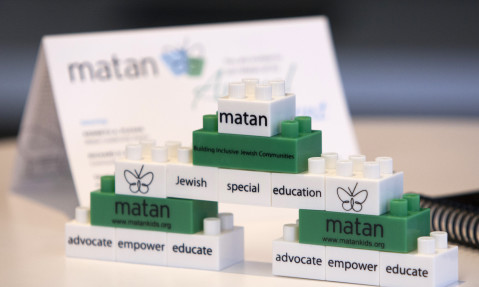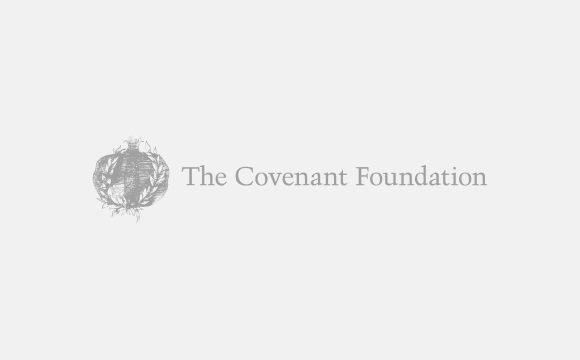Bar Mitzvah, and then What?
But for the boys, not so much.
That’s why the synagogue’s assistant rabbi, Noah Arnow, was in Philadelphia recently, training as a group leader for Shevet Achim: The Brotherhood, an initiative of Moving Traditions as it works to engage Jewish youth through gender-specific programming.
“I see teenage boys in our community who are not so interested in the synagogue or Jewish community or any sort of Jewish path in their lives, so this provides a valuable and relevant opportunity,” he said.
About 40 Jewish educators, communal professionals, lay leaders and others from around the country joined Arnow for a three-day training in the Shevet Achim curriculum and approach to giving teen boys a Jewish-inspired framework as they become young men and give shape to their lives and futures.
Aimed at Jewish teenage boys in grades 8 and 9, Shevet Achim launched nationally a year ago with about 350 participants in nearly 30 groups in seven cities. Officials said they expect the number to nearly double this coming school year.
It takes its place next to Rosh Hodesh: It’s a Girl Thing!, a centerpiece Moving Traditions program that since 2002 has attracted 10,000 participants in grades 6 to 12 and aims to help young girls navigate the challenges of becoming women and inspire them to connect to Jewish community. Both programs were developed with the support of The Covenant Foundation.
But Shevet Achim, officials said, is much more than an attempt at equal opportunity. Rather, it is a long overdue necessity considering some of the trend lines among male Jewish youth.
“Many boys see their Bar Mitzvah as their graduation from Jewish life,” said Deborah Meyer, Executive Director of Moving Traditions, based in Jenkintown, Pennsylvania. “They step off the bimah and are gone.”
Statistics back up the claim. Research in 2000 revealed that 47 percent of teenage boys consider their Bar Mitzvah to be their exit moment from Jewish life, compared to one in three girls who have a Bat Mitzvah.
A more recent study by the Center for the Study of Boys’ and Girls’ Lives showed that only 17 percent of boys participate in Jewish education by the time they are high school seniors, one third fewer than girls. And boys who do participate in Jewish life expressed dissatisfaction, characterizing it as stale, preachy and dogmatic.
The differences have much to do with the varying ways in which boys and girls are taught to view the world, said Rabbi Daniel Brenner, Director of Initiatives for Boys and Men at Moving Traditions.
For example, he said, boys thrive when they have both female and male role models, but the low number of male educators in supplementary education leaves teenage boys wondering if Jewish education will speak to their most personal questions. In addition, many boys are shunted into narrow, competition-based learning environments and they need more interpersonal settings.
The Shevet Achim approach seizes this particular time in adolescent boys’ lives – when they are searching for a community of peers and role models and developing a sense of place in the world – to inject a Jewish context with which to chart a journey toward self-discovery and adulthood.
“Many boys leave the Jewish community because they don’t have the opportunity to explore and question and apply Jewish wisdom to their lives and development as young men,” Meyer said.
“However, when we provide them with the opportunity to question what the world around them is saying about being male, we help boys reach adulthood with a sense of who they are, having felt the power of Jewish community.”
The training reflected many of the contours of the Shevet Achim approach itself. Participants largely sequestered themselves for three days and took part in community-building exercises, studied Jewish texts and teachings, and split into small groups to explore such issues as manhood, courage, and relationship to body and money, all through the extensive Shevet Achim curriculum.
“This is an opportunity to make a difference in young men’s lives and apply Jewish education that is truly relevant and useful,” said Alan Krasne, a lay leader active at Temple Mt. Sinai in El Paso, Texas. “I am not a professional Jewish educator, but I can be a role model to these boys.
“It is true that most post-Bar Mitzvah kids lose engagement and interest. I’m hoping to create a new way for them to engage and realize that Judaism can be and is more relevant to their lives than they know.”
For Gordon Myers, a former soccer coach who will lead the program at Valley Beth Shalom in Encino, California, Shevet Achim applies a particularly Jewish approach to dealing with what he sees as a universal phenomenon: the teenage identity crisis.
“Judaism can be a subliminal tool to help kids through this period,” he said. “If they understand the values and attitudes toward life that Judaism provides, and the balance and perspective that it offers, then however they want to express that, it will benefit them going forward to adulthood and throughout their lives.”
By H. Glenn Rosenkrantz, for The Covenant Foundation


